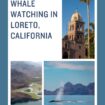
We are reader-supported and may earn a commission on purchases made through links in this article.
There is nothing quite like the Oh-My-God screams, oohs, and ahhs that emit from people sighting a blue whale. It’s a dream come true for so many.
The area around the “Magic Town” (Pueblo Mágico) of Loreto, in Mexico’s state of Baja California Sur, makes those dreams happen.
Pueblos Mágicos is a title given by Mexico’s Secretary of Tourism to almost 200 towns in each of Mexico’s 31 states for their rich history, folklore or unique ambiance.
Visiting Loreto, Baja California Sur
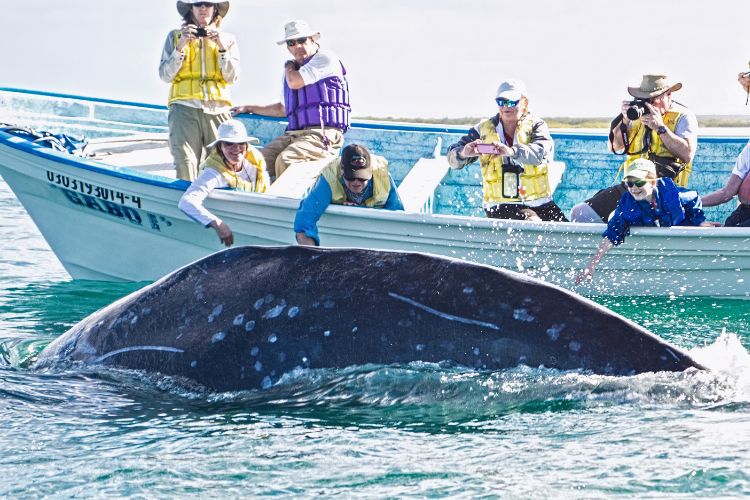
Loreto is a relatively small city, with about 20,000 inhabitants. Founded in 1697, Loreto was the capital of the “Province of the Californias” until 1777, when the capital was moved to Monterey, California, now part of the United States.
However, Loreto continued as the capital of Baja (meaning ‘lower’ in Spanish) California until 1829.
Today, the capital of the Mexican state of Baja California Sur is the seaside city of La Paz, about a five-hour drive south of Loreto. Loreto was the first Spanish colonial city on the Baja Peninsula, where many Jesuit and Franciscan missionaries settled.
During my recent visit to Loreto, I enjoyed wandering down the old cobblestone streets to gaze at the well-preserved colonial architecture, especially in the Plaza where the Mission Loreto church stands, since the late 1600s. The small, but very worthwhile adjacent museum is a good place to spend an hour learning about the city’s history.
Things to Do in Loreto, Baja California Sur
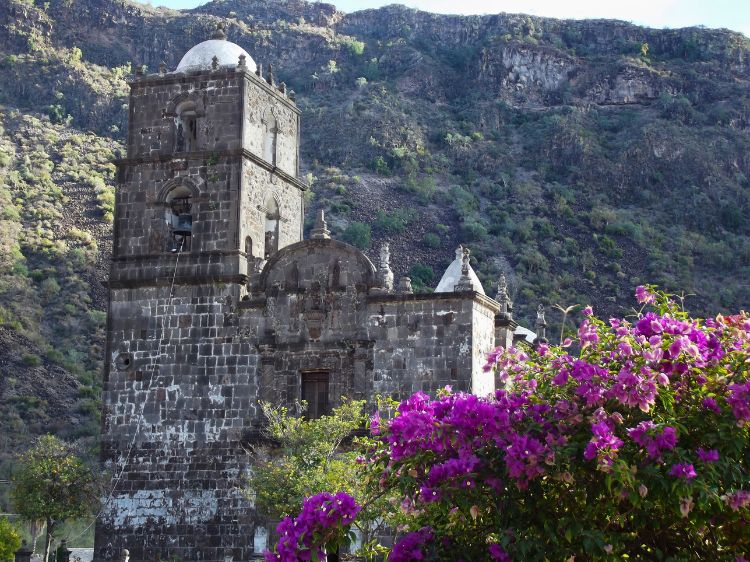
Whale watching is often the highlight for travelers, but there is more to do than whale watching in Loreto. Hiking in the surrounding desert and mountains is a must. My personal highlight (other than seeing the whales) was an afternoon visit to the historic San Javier Mission, about 45 minutes drive away.
Seeing the slowly advancing sunset over the mountain range brought mesmerizing waves of pink, orange and yellow. The ancient mission and its museum were also quite interesting, as was the tiny town of San Javier. Nearby, La Pinguica is a UNESCO World Heritage Site where ancient cave paintings (pictographs) have been well-preserved.
For this, my second trip to Loreto, I began my journey from the very touristy and trendy resort area of Cabo San Lucas at the southern tip. I then traveled up the interior of the Baja California peninsula.
Read More: 7 Reasons to Visit Palm Springs, California
La Paz and the Sierra de la Lagune Mountain Range
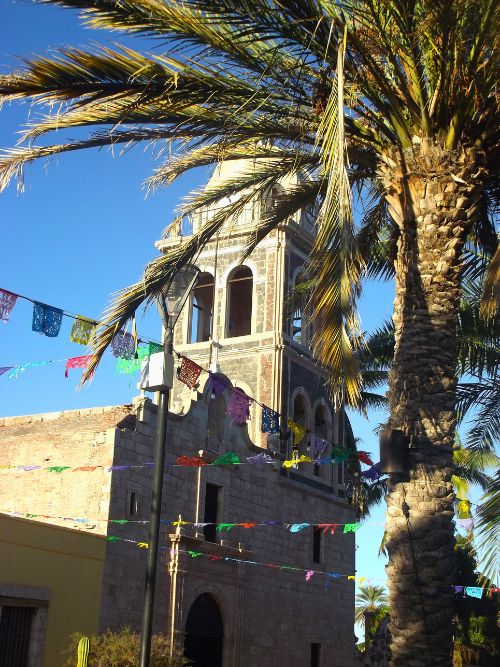
Stopping over for a night’s rest in La Paz, I was entranced by one of the most spectacular sunsets in my memory, made even better by a cold Negra Modelo beer and a steaming hot quesadilla stuffed with shrimp and a chipotle cream sauce that rivaled the sky with its vibrant colors.
Sierra de la Laguna Mountains
Driving through the Sierra de la Laguna mountain range was a rather spiritual experience, with endless vistas of gigantic, multi-armed Cardón Barbón and Cardón Pelón cacti, along with a fascinating array of other spiny plants and exotic desert vegetation.
Strange jagged rock formations like those in fantasy movies loomed in the distance, as did purple and green layers of mountains and lofty peaks. Crested caracaras almost always sat atop the tallest cacti, with bright orange puffin-like beaks.
There were also many Gray thrashers, crows and Wilson’s plovers. I was told that the reptile world comes to life when the temps go up, which made me smile – so, 70’s are not warm enough for them?
Now and then, I viewed coyote roadkill, but it was left to my imagination to know what other wildlife was hidden in the dense desert foliage.
Whale Watching in the Gulf of California (aka the Sea of Cortez)
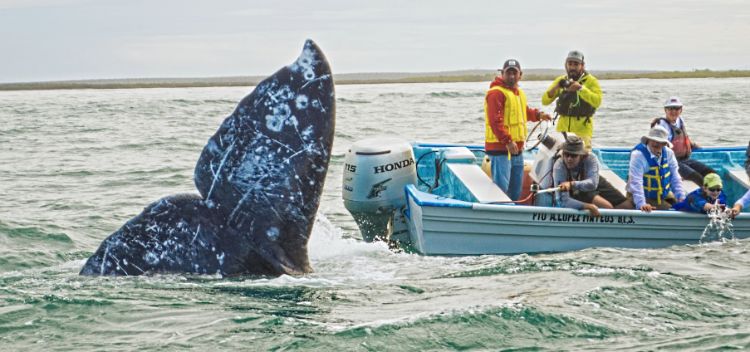
While the scenery was lovely, my objective was whale watching, and I was especially eager to see blue whales, the largest animal on the planet. Loreto and the Gulf of California most certainly did not disappoint me.
READ MORE: Humans and Gray Whales Meet at Magdalena Bay
The Gulf of California, also referred to as the Sea of Cortez, is a large inlet of the eastern Pacific Ocean that separates the Baja California Peninsula from the Mexican mainland.)
The Gulf is the youngest sea on Earth, home to over 700 species of fish, 40 percent of the world’s marine mammals and a staggering third of whale species.
Famed divers such as Jacques Cousteau have treasured and promoted their experiences in the area. The beaches of this region are considered to be the cleanest in Mexico, with nine achieving “Blue Flag” status.
READ MORE: Swimming with Whale Sharks in the Sea of Cortez
Deep sea fishing is hugely popular in Baja, with abundant schools of tuna, wahoo, mahi mahi and marlin, along with many others.
Exploring Loreto Bay National Marine Park
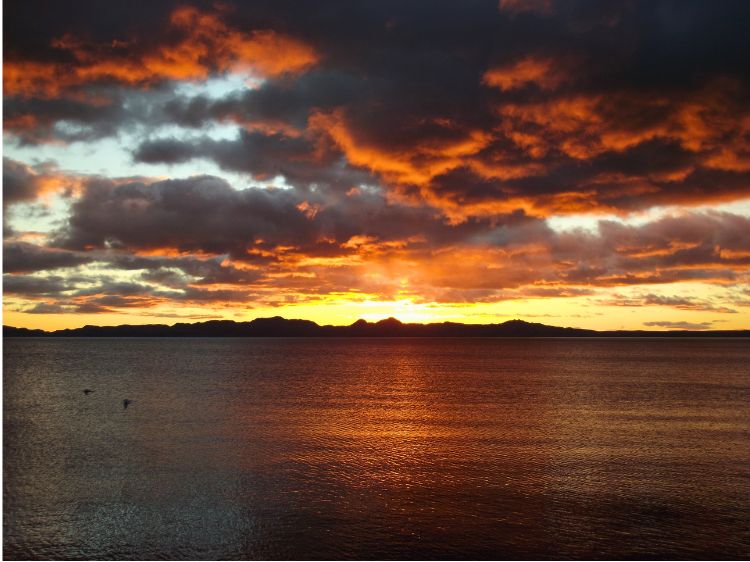
Loreto Bay National Marine Park prohibits large fishing boats, extending over 38 miles along the coast and 21 miles offshore, and is home to five desert islands, including the often-visited Coronado Island. The Marine Park was named to the UNESCO World Cultural and Natural Heritage List in 2005.
Whale Watching Etiquette and Experiences
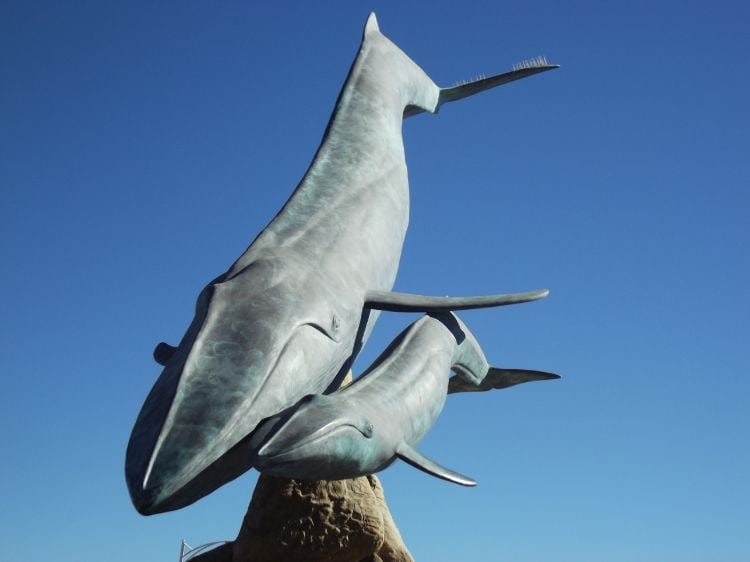
One of our guides explained to us that while some whale watchers are lucky enough to have gray whales approach their 12-passenger skiffs and allow themselves to be touched, we should not expect that. “This trip is for whale watching, not whale touching,” he said. “
If the whales approach us, that’s fine, but it’s up to them. We must stay 90 feet away from them, but they can come to us.”
Indeed, during my previous trip in 2016 to Loreto, a mama fray whale swam under our boat and to my astonishment and delight, her calf swam right next to me.
The ports of San Carlos and Adolfo Lopez Mateos, within the Magdelena Bay, are reached by an easy drive from Loreto. They are where many small tour operators take whale enthusiasts to see the gray whales from mid-January through March.
‘These leviathans weigh between 30-40 tons and travel more than 10,000 miles from their feeding grounds in the Arctic to give birth and to use the shallow, protected Mexican lagoons to nurse their calves before returning to the cold water seas.
Loreto is considered perhaps the best place in the world to see blue whales, and my goal on this trip was to have that experience. Blue whales almost went extinct back in the last century, but the International Whaling Commission banned hunting them in 1966.
Read More: Surviving Stingray Paradise at Seal Beach California
Blue Whales and Conservation Efforts
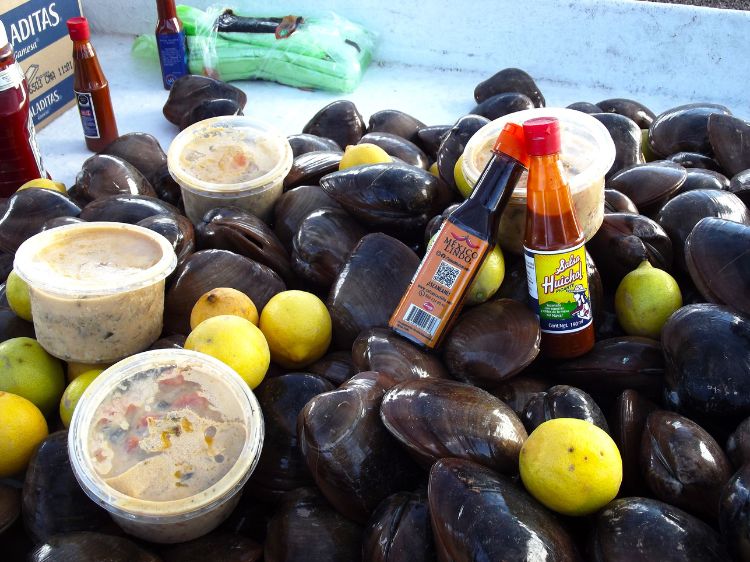
Unfortunately, they are still endangered. Experts believe that there are between 10,000 to 25,000 blue whales in the world’s oceans, with some 3,000 or so traveling down to the Gulf of California each year.
While the gray and humpback whales often breach (jump) out of the water, providing those iconic photo shots, blues rarely perform like that. Blue whales are typically first spotted from their “blow” or breath, which looks like a fountain of mist.
Then their glossy backs rise out of the water. Our guide taught us that the blues might surface for a few minutes, followed by diving down for up to ten minutes to feed on plankton.
I wasn’t really sure if my dream of seeing blue whales would happen. After all, wildlife sightings are never guaranteed. When the first blue whale was spotted, our little crew’s shouts and cries were intense.
I jumped up in awe, my eyes welling over with tears. There truly is nothing like seeing the largest animal on earth right in front of you. Loreto delivers that, and so much more.
If You Go to Loreto, California
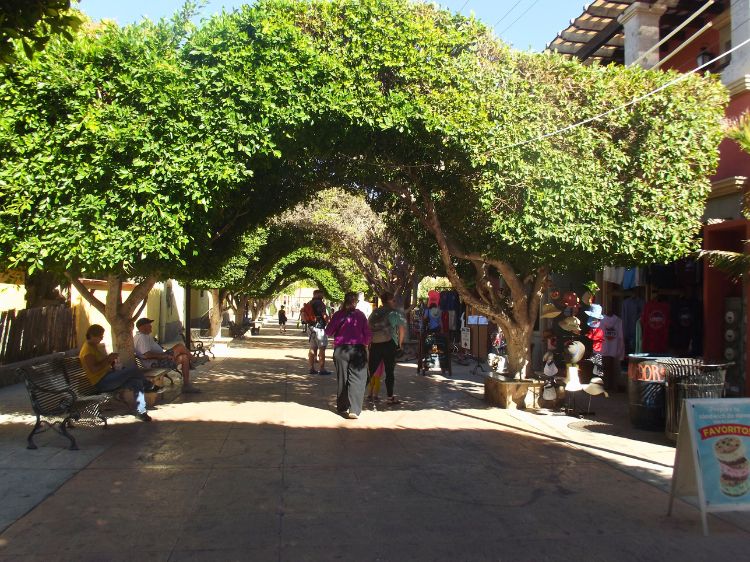
How to Get There
Direct flights to Loreto are offered from San Francisco, Los Angeles, San Diego, Dallas, Phoenix and Calgary. Many drive down from the U.S. in cars or campers as well.
When to Go
Whale-watching season (December to March) is the most popular time to go, but many love the off-seasons as well. Summer is quite hot, with temperatures rising up to 115F.
Fishing Licenses
Whale Expeditions:
- Dolphin Dive Baja (Blue Whales)
- General Whale Tours
Where to Stay:
Where to Eat:
- Claudia’s Restaurant
- Raiz Restaurant at Posada de las Flores
- Zopilote Brewery and Company
- Serranos
- Mi Loreto
- Ocotillo (at the Cordelia Hotel in the Nopoló area)
- Orlando’s
Read More:
Author Bio: Irene Middleman Thomas lives in Denver but thrives on travel and exploration around the world. Seeing blue whales was the thrill of a lifetime of being a wildlife enthusiast. Eating delectable Mexican food for a week was a culinary thrill. She writes for dozens of outlets in the U.S., Canada and the UK. www.irenethomas.com

